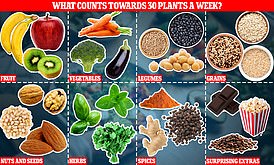How kids as young as TEN use anti-aging products: Experts warn social media is the trend
- Pre-teens are begging parents for moisturizers that cost around £50 a jar
- Ingredients like retinol can cause redness, flaking, and rashes on children’s faces
Children as young as ten are using anti-aging creams because of social media pressure, experts warn.
Pre-teens are begging parents for moisturizers that cost around £50 a jar because they have complicated skincare regimes, according to dermatologists.
Ingredients such as retinol, a form of vitamin A, are popular but, while helpful for aging skin, can cause redness, flaking and rashes on children’s faces.
Older teens are at risk of worsening their acne by using unnecessary and expensive products.
Dr. Emma Wedgeworth of the British Cosmetic Dermatology Group warned that some 10-year-olds are using skin creams intended for older women.
Pre-teens are begging parents for moisturizers that cost around £50 a jar because they have complicated skincare regimes, according to dermatologists
She said: ‘There are children who have extensive skincare routines, who wash their face before using a serum, then a mist and then a toner, followed by an expensive moisturiser.
‘This is completely unnecessary as children only need to wash their faces with a gentle, fragrance-free cleanser and use a light moisturizer and sunscreen during the summer months.
‘But social media makes children very conscious of their appearance and skin, as they compare themselves to influencers, and that is also worrying for their mental health.’
Parents are harassed to buy expensive face creams for their children because the youngsters see them being used on social media.
However, some of these products can irritate the skin of pre-pubescent children and clog the pores of teens with oilier skin, worsening acne.
Dr. Anjali Mahto, consultant dermatologist at Self London, said: ‘I am aware that there is currently a trend on social media for teenagers showcasing their luxury skincare routines (often with lots of steps), especially on platforms such as TikTok.
‘As a dermatologist, I think it’s essential to emphasize that a 13-year-old’s skincare routine should prioritize basic hygiene, rather than unnecessary complexity.’
She added: ‘Teenagers are sometimes overly concerned about premature aging.
‘I recently saw a 14-year-old in the clinic who was concerned about crow’s feet.
“She was undoubtedly influenced by social media and influencers.”
Dermatologists say teens are following online trends when they should seek medical attention for problems like acne.
Dr. Wedgeworth said: ‘I see my own 12-year-old daughter wanting to spend a lot of time on her skincare routine before and after school.
“I think a lot of this attention is coming from recognizable girl-next-door influencers on social media.
“And as a result, many young children scrutinize their skin and pay attention to blemishes and blemishes, much more than is necessary at this age.”

